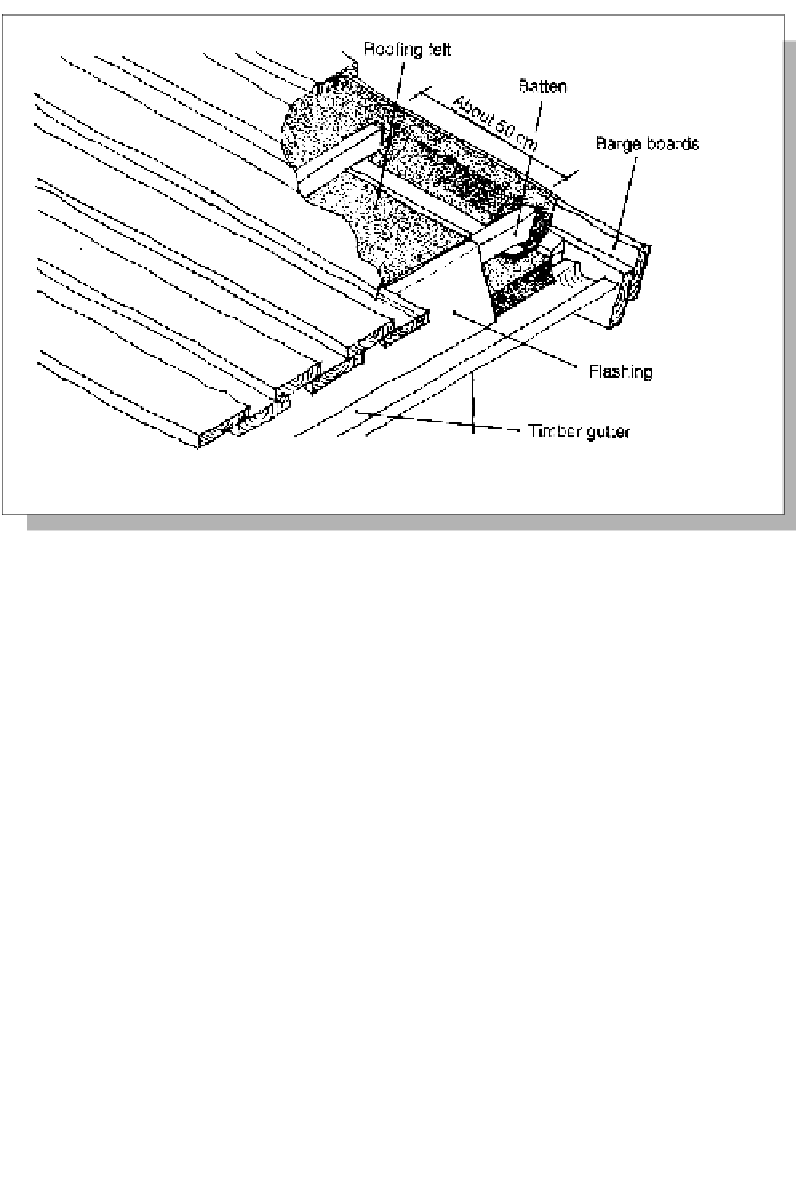Civil Engineering Reference
In-Depth Information
Figure 15.17: A plank roof.
Source: Norwegian Building Research Institute
half-rounded timber and is therefore easier to lay, but the durability is probably not as good.
If low quality half-round timber is used, the wood will swell and soon make the roof leak.
The plank roof
This is based on the same principle as the log roof, with planks lying on top of each other
and running parallel to the slope of the roof. High quality pine should be used in less than
15 cm widths to reduce the chance of cracks forming. There should be grooves on the
edges of the upper and lower planks for draining water. The planks are laid so that they
press against each other when they swell in damp weather. The side with the inner grain
of the tree must face upwards, especially in the case of the top planks. The root part of
the log has the best quality and should lie on the lower part of the roof. The plank roof is
often used as a base for other roof coverings.
The 'Sutak' roof
This is a method of roof covering that can only be used for steep roofs. Sutak roofs are
usually found on small roof towers or ecclesiastical buildings and seldom in any other sit-
uation. The boarding is nailed onto the roof structure parallel to the ridge with about 5 cm
overlap, with the inner grain facing upwards. This method was often used on the oldest
stave churches.
Shakes
Logs that are to be used as shakes have to come from a mature tree and be well grown
without any penetrating knots. The trunk is sawn up into 30-65 cm-long stumps and then

